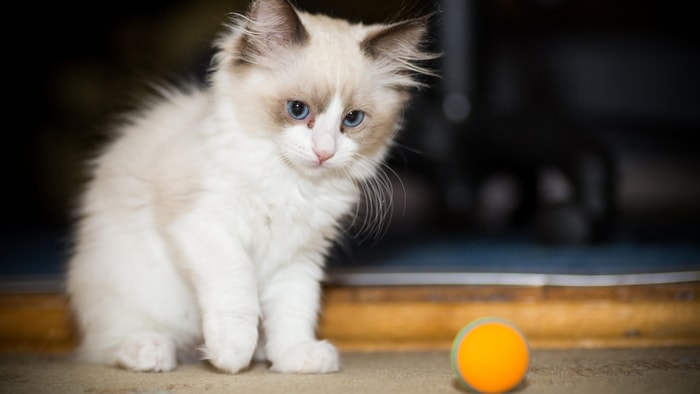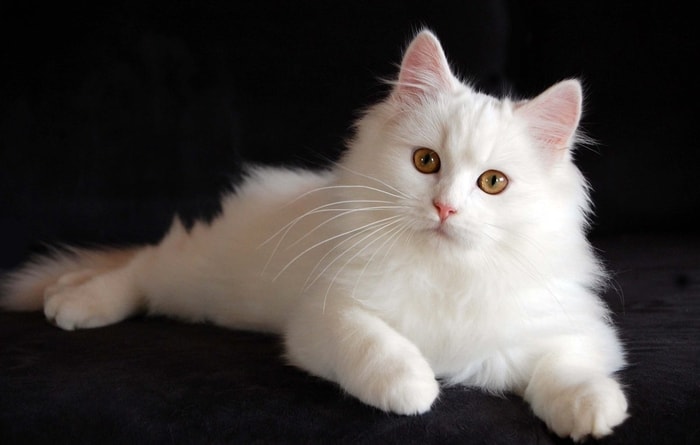Fatty liver syndrome in cats is one of the fatal liver diseases. The disease is characterized by the excessive deposition of fats in the cat’s liver. Feline hepatic lipidosis is the cause of the reversible live failure in cats.
Importance of Fatty Liver Syndrome in Cats
The liver is one of the essential digestive organs of cats. The liver’s primary functions are metabolism of carbohydrates and fats, detoxification of nutrients, synthesis of protein and vitamins, and storage of minerals, glucose, and vitamins. The liver also produces substances responsible for blood clotting and removes toxins from the blood. Hepatic lipidosis in cats hampers all those functions of the liver and leads to death.

Causes of Hepatic Lipidosis in Cats
Usually, fat molecules produce 2.25 times more energy than glucose. When fat molecules break rapidly to deliver fuel to supply power to an anorexic cat, life cannot process it. The fat molecules stored around the live cells hamper normal liver function. The major causes of hepatic lipidosis are:
- Complete anorexia for three or more days.
- Overweight or obese cats.
- Peripheral fat mobilization exceeds the capacity of the liver.
- Inflammatory bowel disease.
- Other liver diseases.
- Hepatic cancer.
- Pancreatitis in cats.
Predisposing Factors of Fatty Liver Syndrome in Cats
The predisposing factors of hepatic lipidosis are:
- Stress.
- Diet Change.
- Hypothyroidism in cats.
- Nutritional deficiencies.
- Diabetes in Cats.
- Obesity.
- Partial or complete anorexia.
- Significant loss of appetite.
- The recent loss of body weight.

What are the Signs of Hepatic Lipidosis in cats
The usual signs of hepatic lipidosis are:
- Suddenly decreased bodyweight of cats (up to 25%).
- Lethargy.
- Vomiting.
- Ptyalism.
- Neck retroflection.
- Jaundice.
- Hepatomegaly.
- Diarrhea is common in HL.
- Vitamin K1 deficiency causes excessive bleeding.
- Impaired liver functions.
Diagnosis of Fatty Liver Syndrome in Cats
Hepatic lipidosis is diagnosed by clinical history, clinical signs, laboratory tests, liver biopsy, and biochemical analysis of liver enzymes. The usual test for diagnosis of HL are:
- Blood test for liver function.
- Liver biopsy.
- Sudden loss of body weight in plant nutrition.
- Hypobiliruminemia and bilirubinurea.
- Marked to a mild increase in AST and ALT.
- Nonregenerative anemia.
- USG of life reveals fatty liver.
Treatment of Feline Hepatic Lipidosis
The primary treatment for hepatic lipidosis is the correction of clinical signs. The treatment is based on the clinical signs:
- Initial IV fluid to support nutritional requirements.
- If the cat refuses to eat, arrange force-feeding.
- Vitamin B complex injection with IV fluid is also helpful.
- Vitamin B12 (@250-10,000 mcg/cat)injection will help to improve blood parameters.
- Vitamin K @0.5-1.5 mg/kg body weight.
- Cat affected with HL may be hospitalized for 7-10 days.
Prevention or Nutritional Support for Fatty Liver Disease
Hepatic lipidosis can be prevented with routine nutritional and health care measures. You can plan a balanced ratio for your lovely cat. There a numerous commercially available cat feed that you can select for your cute cat. You must report immediately to your vet if there is any inappetence or feed refusal.
Concluding Remarks on Feline Hepatic Lipidosis
Hepatic lipidosis is one of the most severe liver diseases in cats. The disease may lead to the life-threatening death of your lovely cat. You must take adequate care about the regular feeding of balanced nutrition. I think this article will help you a lot. Thank you very much for the happy reading.